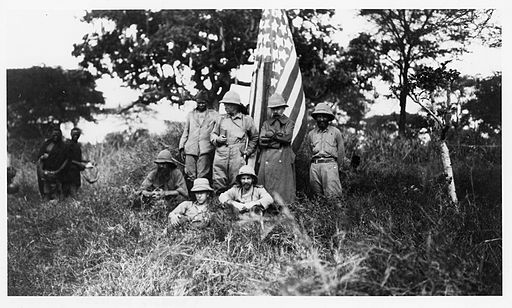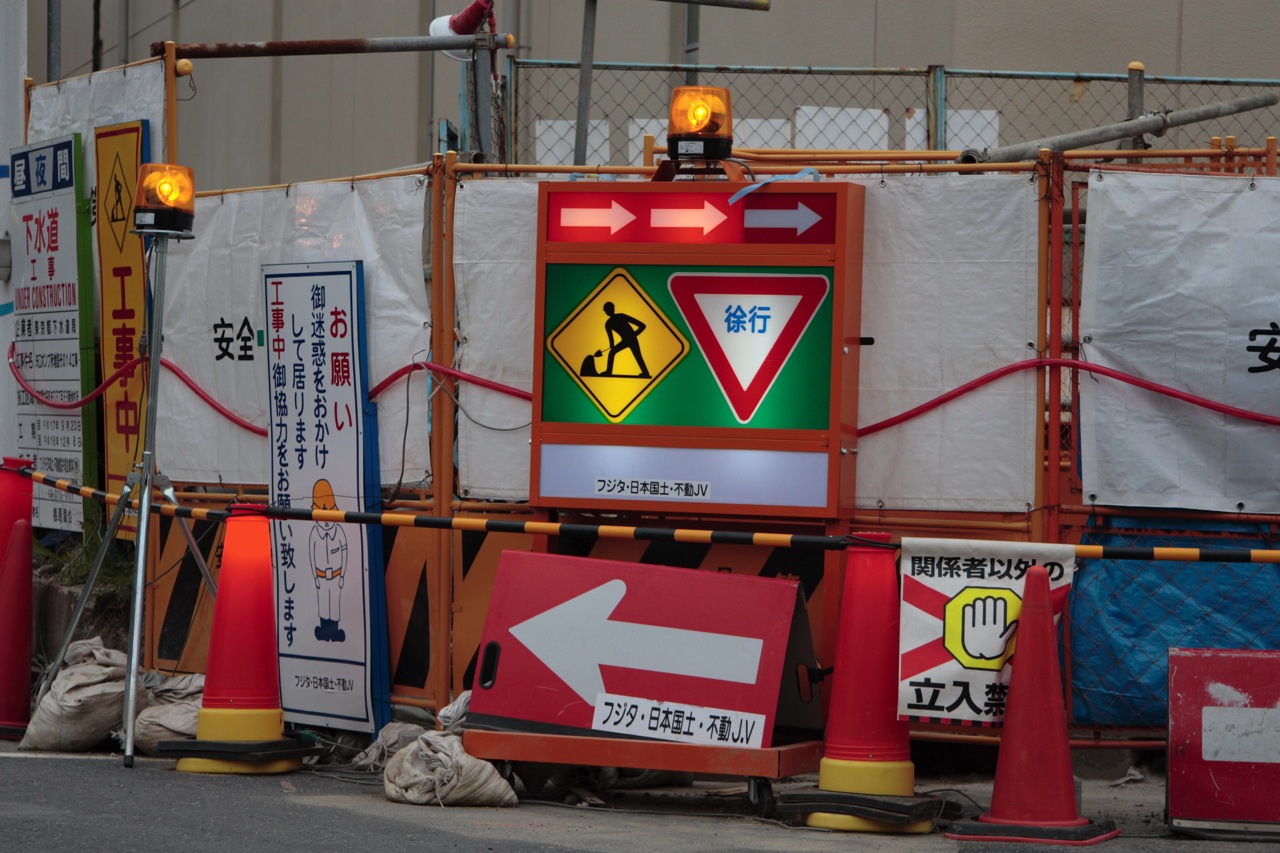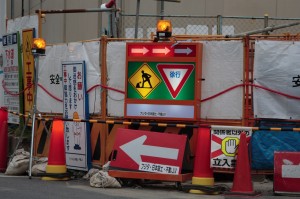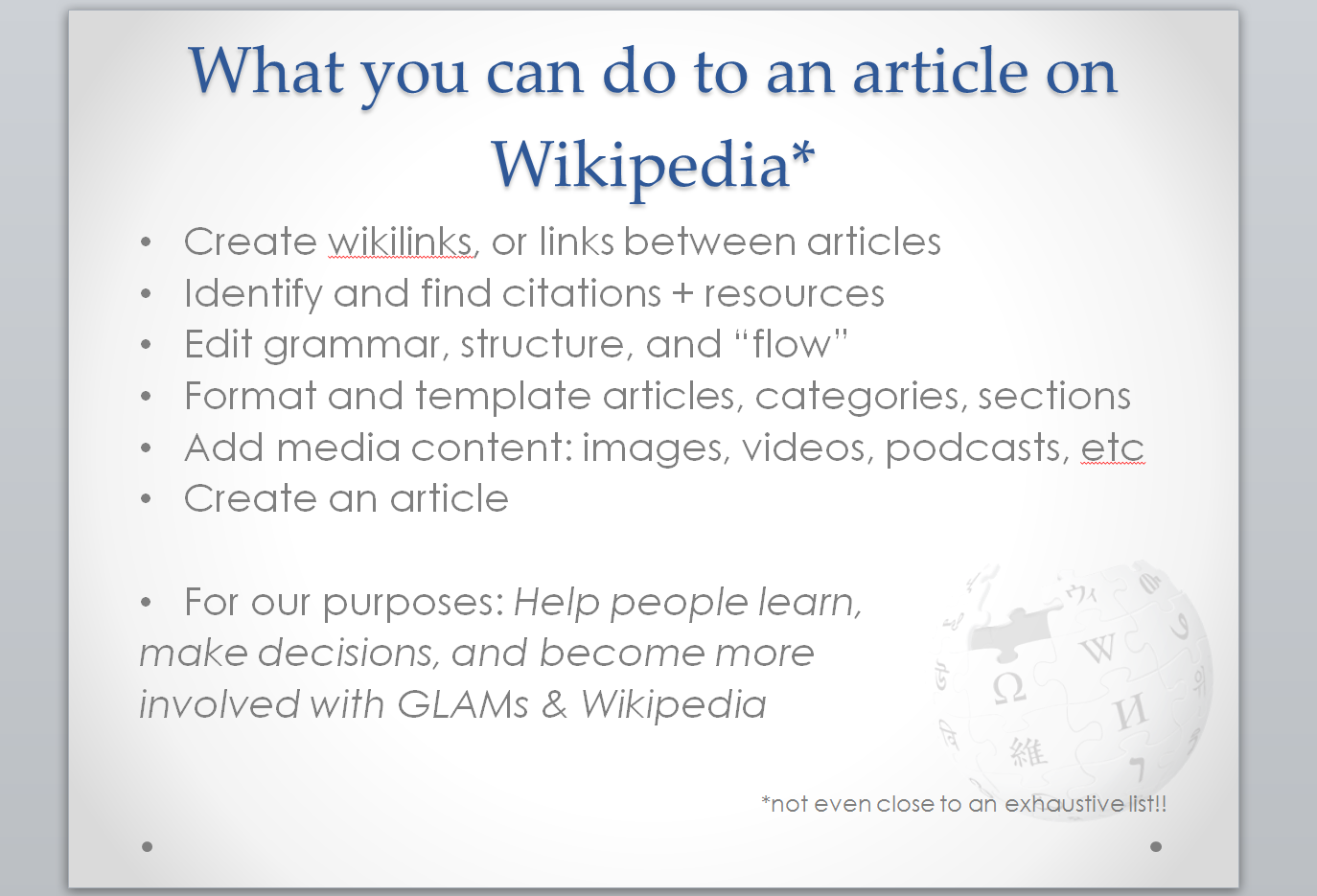Category: Webs of knowledge
RDR on 10 Distinctive Qualities of Qualitative Research
Research Design Review recently summarized 10 distinctive qualities of qualitative research which succinctly capture the essence and utility of the kind of work performed by researchers like me.
In her Research Design Review piece, author Margaret Roller observes that qualitative research happens because researchers “acknowledge the human condition and want to learn more, and think differently, about a research issue than what is usual from mostly numerical quantitative survey research data.”
Below are Roller’s 10 attributes (in bold) and the reasons I consider them useful.
- Absence of “truth”
- As suggested on this blog regularly, knowledge is constructed from information and in context. It is the the product of the process of research; it is not truth but rather “possibility” (plausible interpretation). I often describe my findings or interpretations as “ONE truth” or “one version of truth/reality,” emphasizing that my interpretation is well-informed but always subject to negotiation based on further context
- Importance of context
- The setting, culture, research parameters and questions always influence the ways in which we can interpret data.
- Importance of meaning
- Meaning is created through understanding the blooms from the intersections of many points in analysis. Roller suggests sources for meaning include “any number of variables such as: the context, the language, the impact of the participant-researcher relationship, the potential for participant bias, and the potential for researcher bias.”
- Researcher-as-instrument
- The interpretations and the process of research are performed through and organized by and described through the researcher. This has many benefits including the potential for nuanced findings and “thick description” but it is also important to consider the bias, approaches, and institutional contexts of the researcher – as well as the power the researcher wields as an instrument of qualitative analysis. Remember, many choices, and therefore the exercise of power, play a role in final interpretations.
- Participant-researcher relationship
- This is element of qualitative research is extremely important in performing and getting useful and accurate interpretations. Communication, rapport, and accountability all play a role in a successful participant-researcher relationship and shape the outcomes of data collection and analysis.
- Skill set required of the researcher
- Perhaps the most underrated of these qualities, qualitative research “requires a unique set of skills from the researcher, skills that go beyond the usual qualities of organization, attention to detail, and analytical abilities that are necessary for all researchers,” Roller observes. She goes on to list rapport-building and active listening as further examples, but her most notable point is that specific and nuanced analytical toolkit is necessary to “meet the demands of “messy analysis” (see below) in qualitative inquiry where context, social interaction, and numerous other inter-connected variables contribute to the realities researchers take away from the field.” This is often the most difficult thing to explain when entering a project but often unfolds without stakeholders realizing. If it’s a smooth researching process with audiences, you’ve likely brought on board a skilled researcher.
- Flexibility of the research design
- Again, an extremely complicated skill to bullet point on a resume. Yet, a flexible researcher knows how to stay active and continue to derive communication while simultaneously analysing the information; second and third passes over the data will allow for even more robust findings. In other words, the intended questions may be set aside to capture the reality of the researching space and research may take iterations to flesh out hidden meanings and perspectives.
- Types of issues or questions effectively addressed by qualitative research
- Especially for questions that really mean “to what extent” rather than “how much” or seeking to understand group behaviors and cultural values that emerge concurrently with or contradict official/dominant perspectives.
- Messy analysis and inductive approach
- Qualitative research may start with a general question and create understanding as knowledge is being attained. Roller writes “without a doubt, qualitative research analysis is messy. The analysis of qualitative data does not follow a straight line, where point ‘A’ leads to point ‘B’, but rather is a multi-layered, involved process that continually builds upon itself until a meaningful and verifiable interpretation is achieved. The messiness of the interconnections, inconsistencies, and seemingly illogical input reaped in qualitative research demand that researchers embrace the tangles of their data from many sources. A large contributor to the “messiness” of the analytical process is the inductive method. Qualitative researchers analyze their outcomes from the inside out, organizing and deriving meaning from the data by way of the data itself.“
- Unique capabilities of online and mobile qualitative research
- Finally, technology allows for new techniques AND new research spaces – and supports general communication and connection (and conflict!) between groups of people. The resulting research space, as Roller suggests, offers new power dynamics between researcher and participants but also offers shared control of findings and more flexible ways to gather, respond, organize and distribute research findings.
Qualitative research is excellent for unlocking detailed case studies, understanding communication and communities, and understanding audiences and every day lives, as well as helping flush out and answer the assumptions and further questions that often emerge in quantitative analyses.
Keyword Round-up: June on Academia.edu

Exploring my June Academia.edu analytics report featuring minimal use of keywords but increased views.
In June, I was a busy bee preparing for the Expeditions & Explorers Edit-a-thon and concurrent launch of the Transcription Center. Admittedly, late July and early August have been wild with work! The last two months have featured research and consulting heavily, as well as an unanticipated two week sabbatical-cum-nannying “project.” Alors, back to the task of unpacking analytics…
KEYWORDS
First, focusing on simply the keywords that were used to locate my papers and profile: there were 8 keyword searches recorded and all used Google search (one Google.co.uk search). They came from 6 different countries. The searches led my “audience” to the following: four searches directed to “Heroes & Zeroes“, two to “The Stories They Tell“, and two to my profile. Keywords and their rank in the Google search, if applicable, are below:
- descriptive text about athletes (8)
- heroes and zeroes: extending celebrity (1)
- (The Stories They Tell URL)
- (The Stories They Tell URL)
- http://www.jerryricefootball.com/index.cfm/pk/content/pid/400047
- meghan ferriter (8)
- meghan ferriter soccer
- sport narritive storylines (4)
Matching the trend from May, two searches related to text and narrative though one focused on celebrity and the other for athletes. Two searches used the full URL for the paper on academia.edu, while one used the first words of the article to search. Two searches included my full name. Intriguingly, with one middle of the month exception, the keyword searches were performed in the first and last week of the month.
Although I uploaded my MA Thesis “The Sharper Image” – regarding the interplay of constructions of Irish Nationalist Identity in British political cartoons and Irish Nationalist writings prior to the establishment of the Free State – neither this paper nor “Arguably the Greatest” received any hits from keyword search.
VIEWS
June did turn over interesting results in views despite low keyword searches – with credit to my inclusion of more papers and being featured on the Academia.edu blog.
The paper additions included my introductory chapter of my dissertation/thesis (US/UK, depending on where you dwell & study), as well as my M.A. thesis/dissertation (again the international contextualization applies). Each of these pieces are presented in their final draft form – and each has massive utility for publication and further research, so dusting them off for Academia.edu’s digital display case was a welcome move and started gears turning.
In direct correlation to the feature on the Academia.edu blog, my profile views leapt to 74, with 11 views of my CV page. My papers “The Stories They Tell” and “Heroes & Zeroes” received the greatest number of views with a significant drop in views between the two; the former at 58 views and latter at 14 views. The three other papers accounted for 15 views in total.
|
Paper |
Views |
| The Stories They Tell | 58 |
| Heroes & Zeroes | 14 |
| Arguably the Greatest | 8 |
| Changing the Game (thesis chapter) | 4 |
| The Sharper Image (full M.A.) | 3 |
|
Page |
Views |
| Profile | 74 |
| CV | 11 |
| Posts | 2 |
| Question | 1 |
VISITORS
I was also intrigued by the locations of visitors, with the US, Ireland, and the UK leading visits. Most of these visitors viewed one page, though a handful from Ireland and the US visited multiple pages. Three visitors viewed 4 or 5 pages on their visit.
|
Countries |
Views |
| United States | 73 |
| Ireland | 46 |
| United Kingdom | 13 |
| Singapore | 11 |
| Canada | 9 |
| Bulgaria | 7 |
In May, I had 40 unique visitors. In June, 110 unique visitors spent time on my pages. Of those numbers, the Academia.edu blog feature sent 37 visitors to my profile; 14 visitors navigated through their academia.edu feed. Finally, 35 visitors navigated from my profile to my papers.
CHALLENGES
There were limited conversions of follows from views, even with the Academia.edu blog feature. Approximately 10 followers were added in the month of June and it is unclear whether that resulted from my legwork or “clickwork” in following other researchers.
Furthermore, there are two gaps in understanding user behavior based on the analytics we are provided as a part of the service:
- the download conversion rate (i.e. actual download numbers for papers)
- time on page (i.e. how long a visitor stays on the page, ideally reading)
Drilldown capabilities and the paths which users follow through your pages are also not provided but can be guesstimated by piecing together details by visitor ID.
SUMMARY
In summary, keywords brought people in relation to celebrity, athletes and narrative, while a profile piece attracted visitor numbers that doubled the previous month’s visits. I had increases in views on my profile and especially “The Stories They Tell” and “Heroes & Zeroes,” which discuss – you guessed it! – celebrities, athletes, and narrative. Overall, this information may be useful in understanding an appropriate existing audience for my research.
Stay tuned for elaboration on the adventurous terms used to find my work in the forthcoming July Keyword round up.
Summarizing Outcomes: Expeditions & Explorers Wikipedia Edit-a-thon

This post summarizes the outcomes and experience of the June 21 Expeditions & Explorers Wikipedia Edit-a-thon, co-hosted by Smithsonian Institution Archives (SIA) and National Museum of Natural History (NMNH) for Field Book Project materials.
We believe the event helped to advance freely available knowledge by harnessing the power of the GLAM-wiki relationship. As a reminder, GLAM stands for Galleries, Libraries, Archives, and Museums and the cultural heritage collections that they steward. The advancing elements of the Expeditions & Explorers event were:
- catalyzing diffusion of knowledge through article creation,
- interlinking of existing articles, subjects, and categories,
- sharing and highlighting the accessibility of GLAM resources, including finding aids and digitized texts and images
- uploading Smithsonian Institution collections images to Wikimedia Commons
These tasks serve to improve Wikimedia projects, Wikipedia, as well as GLAM-Wikipedia relationships in several ways.
First, it offered participants a dynamic experience for experienced and inexperienced editors and civilian and museum professionals to bring a variety of skills and knowledge bases to play in unlocking the power of the crowd.
Secondly, the event activities were focused on learning, playing, and working with cultural heritage and scientific materials. This included an exclusive special collections tour and curated discussion and exposure to electronically available resources which allowed participants to understand the diversity of and relationships between Smithsonian Institution collections.
Finally, participants shared their experiences with others through social media; highlighting the ways in which they were having fun, while working on and exploring Wikipedia and the new transcription center. This can only encourage other to participate in future events.
Event Goals
The event was a success in relation to all of the stated goals. Here are several examples of specific ways in which the five goals were achieved:
1. “To encourage inexperienced editors and show them how they can contribute to Wikipedia”
Event participants included five new, inexperienced editors. Our event focused on showing them how they can contribute to Wikipedia
- through an editing tutorial
- helping them establish a Wikipedia user account
- providing best practice tips
- encouraging open discussion of how, when, and why to perform certain tasks on Wikipedia – as with this slide from the best practice tips
2. “To improve a selection of Wikipedia articles related to scientists and expeditions”
- We identified five existing articles about scientists and expeditions and asked participants to improve these articles.
- We also identified four expeditions and scientists who were not represented on Wikipedia and asked participants to help make articles for them.
- This resulted in expansion of seven existing articles and creation of four new articles, as well as wikilinking between existing and new articles, for a more robust web of knowledge
Updated Articles:
- Theodore Roosevelt
- A. S. Hitchcock
- Mary Agnes Chase
- Edward Palmer (botanist)
- Edgar Alexander Mearns
- United States and Mexican Boundary Survey
- Edmund Heller
Newly created Articles
3. “To make Smithsonian-held materials more openly linked”
- Within our Expeditions & Explorers to-do list, we provided Smithsonian Institution resources and electronic records
- We linked at least 15 Smithsonian Institution materials within and to at least nine articles.
4. “To test a new transcribing tool to make our field books more findable and useful”
We invited participants to test the Smithsonian Digital Volunteers Transcription Center and also gathered feedback and discussed the tool with participants
5. “To increase awareness of the research resources freely available through libraries, archives, and museums”
- We believe we achieved this goal not only through the pre-event work in providing resources for articles and the during-event work of editing from specific GLAM resources,
- But also by tweeting about and sharing progress on our event goals during and after the event, with further reports to follow
See posts by my fellow edit-a-thon facilitators Carolyn Sheffield and Effie Kapsalis for perspectives and observations on the edit-a-thon; the Field Book Project blog and the SIA Bigger Picture blog, respectively. The next steps for my analysis include moving through the work to explore the collaborative production of knowledge occurring around these materials – then developing the next Wikipedia edit-a-thon event.
Remember, you can always participate in Wikipedia edit-a-thons remotely – many events are happening daily and “anyone can edit,” so please join in and help build knowledge where you can.
Featured image via Wikimedia Commons (public domain, held with SIA)
Free Thinking: Models of Knowledge Construction

Just a few quick notes — “free thinking” in the spirit of #showyourwork — and on the subject of the production and construction of knowledge*.
This spring/summer I’ve observed at least three separate types of digital spheres in which engagement and information exchange occur: Tumblr fandom, Wikipedia, and transcription models. I have approached these as “project-oriented” spaces because participants
- are operating independently but with the belief that others can see and share their work/product/material,
- have opportunities to see the work of others and integrate, respond to, or reject that work
- can use the technology to assert information as knowledge, evidence, or fact
- can communicate with [someone else] working on the project, though maybe not always directly with each other.
These spaces have also been home to certain kinds of collaborative or project-oriented communication. In other words, in these spaces people have shared information with or without conditions, been working together to achieve a goal, and/or have worked together to create an agreed-upon outcome (consensus). Finally, these are realms of knowledge production and/or construction.

In the past, I have referred to webs of knowledge and cultural webs in my writing – and often what I am discussing is how individuals come together to share information or existing “knowledge” about subjects. Yet, in these spaces, we can also see nuances of producing or constructing knowledge – two different models of knowledge at play in these spaces.
I have distinguished between these models as “authorized” versus “authenticated” knowledge. I’ve gotten feedback that these definitions sound IT or technologically centered. I briefly considered “control” versus “consensus” but that appears to me too critical of the former – and actually so does “authorized.” Therefore, I am resting my thoughts currently on the following pair:
“Offered” versus “Authored” knowledge
These models of knowledge are distinguished and related to spaces of participatory practices in a few ways.
First, “offered” knowledge is the suggested or preferred way of viewing the body of information – you could perhaps label it official, or curated, or dominant discourse. “Authored” knowledge is a version of information developed through a collaborative and information-sharing process. One way to think of this kind of knowledge is as augmenting or contextualizing “offered” knowledge.
Secondly, In participatory processes, “offered” knowledge can be combined with other knowledge repositories to create “authored” knowledge. “Authored” knowledge, therefore, references and/or builds upon existing “offered” knowledge. As a participant contributes to “authored” knowledge, he or she may reference the discrepancies between these two knowledge bases. He or she might also gain acceptance or earn status in the group by understanding and correctly using (and perpetuating) authored knowledge.
I will jump off here and continue to flesh out the relationship between “offered” and “authored” knowledge – and how it is implicated in sustaining or remaking relationships of power. If you’ve come across these models in other spaces, please share your observations in the comments. I’m curious to learn more about digital places that highlight models of knowledge and where “offered” knowledge is sustained or remade through participatory “authoring.”
*knowledge: “a (1) : the fact or condition of knowing something with familiarity gained through experience or association (2) : acquaintance with or understanding of a science, art, or technique” – merriam-webster.com, http://www.merriam-webster.com/dictionary/knowledge
Image via Flickr Commons – gullevek and Construction Work (2006)
Smithsonian Institution Transcription Center in Beta
We launched the Smithsonian Digital Volunteers Transcription Center Friday 21 June as a collaborative, crowdsourced process that aims to bring digitized collections out from archives and museums. We are inviting our SERIOUSLY AMAZING audiences to help us unlock their stories by transcribing and reviewing their contents – to make them more accessible, searchable, and open.
This is another outstanding opportunity to make webs of knowledge and learn about the connections between collections. Please jump in and help where you can!
**UPDATE** (14 October): The Transcription Center is fully back in business with new features to launch shortly – while many projects have been moved to completion, there are still plenty of pages to transcribe and review. Join the community of digital volunteers!
My role has involved advising on use for communities of practice, understanding crowdsourcing capabilities, and developing coherent narratives for the pieces – rather than technical development – but I welcome feedback on usability, design, and any other “would be nice.”
Feel free to transcribe and offer feedback if you have thoughts to share! The service is still in beta and we are constantly integrating what we learn from users. Thanks for allowing me to share this successful first step in our transcription process – more to follow…

